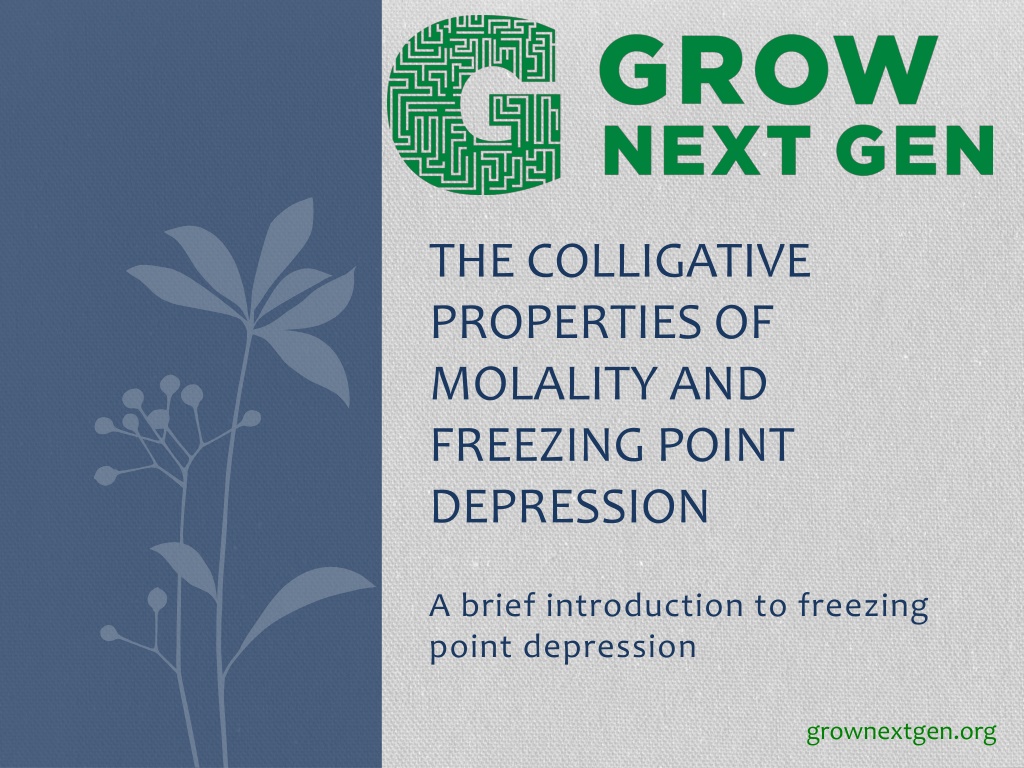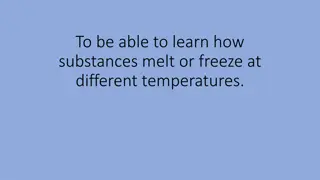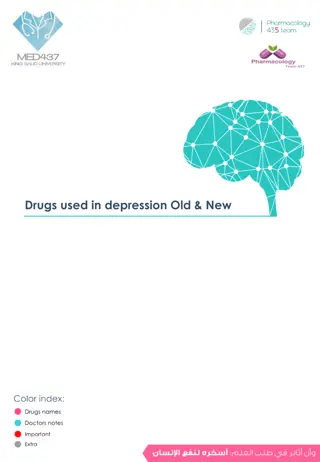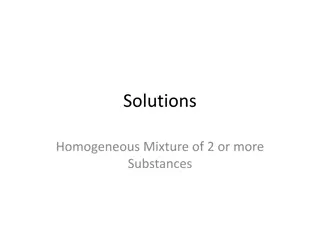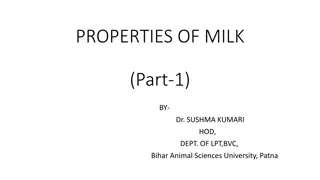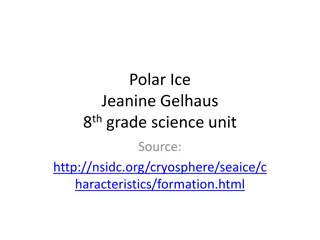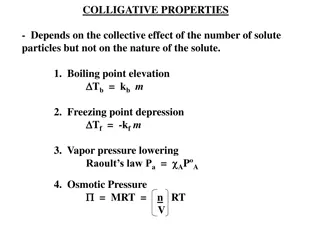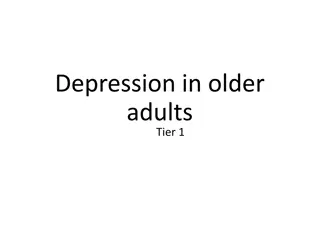Understanding Freezing Point Depression and Molality for Solutions
Introduction to molality and freezing point depression in solutions. Molality is a way to measure solution concentration, calculated using moles of solute and kilograms of solvent. By calculating the moles of NaCl in a salt solution and the mass of the solvent (ice/water), the molality can be determined. Freezing point depression, the change in freezing point due to adding solute particles, is calculated based on molality and the freezing point constant of the solvent. For a salt solution, the new freezing point can be determined by considering the dissociation of ions.
Download Presentation

Please find below an Image/Link to download the presentation.
The content on the website is provided AS IS for your information and personal use only. It may not be sold, licensed, or shared on other websites without obtaining consent from the author. Download presentation by click this link. If you encounter any issues during the download, it is possible that the publisher has removed the file from their server.
E N D
Presentation Transcript
THE COLLIGATIVE PROPERTIES OF MOLALITY AND FREEZING POINT DEPRESSION A brief introduction to freezing point depression grownextgen.org
What is molality? A quantitative method to measure solution concentration. http://www.swiftutors.com/admin/photos/molality-formula.png Moles of solute: grams of solute/molar mass of solute Kilograms of solvent for water (which is what we will use): milliliters of water = grams of water/1000 We can use this to calculate our salt water concentration.
Lets calculate the moles of NaCl used to make ice cream. Using 60.00 g of NaCl Molar Mass of NaCl = 58.5 g/mol 1 sodium atom weights 23.0 g/mol and 1 chlorine atom weighs 35.5 g/mol as listed on the periodic table 60.00 g NaCl/58.5 g/mol = 1.03 moles of NaCl
Lets calculate the mass of the solvent (ice/water) Using 960.00 g of ice 960 g ice = .960 kg ice
Now lets calculate the molality Molality = 1.03 mol/.960 kg = 1.07 mol/kg or 1.07 m
What is freezing point depression? Freezing point depression ( Tf): change in the freezing point of a solution It is how far the freezing point of a solution will lower (depress) due to the addition of solute particles http://calculator.swiftutors.com/freezing-point-depression-calculator.html Where: m = molality of the solution (calculated on previous slide) Kf = freezing point constant for the solvent for water = 1.86oC/m i = number of particles the solvent will dissociate -for ionic compounds, it is equal to the number of ions -for covalent compounds it is equal to ONE
For our salt solution? http://calculator.swiftutors.com/freezing-point-depression-calculator.html NaCl is ionic and will dissociate into 2 ions (Na+ and Cl -) so i = 2 Kf = freezing point constant for the solvent for water = 1.86oC/m m = 1.07 m Tf= 2 x 1.86oC/m x 1.07 m = 3.98 oC Which means that by adding 60 g of salt to the 960 g of ice, the temperature of the solution now should be depressed 3.98 oC below normal freezing point (which is 0oC) new solution may chill down to 3.98oC
So what does that mean for us? Ice cream we can depress the freezing point down to freeze the milk/sugar solution in the bag and enjoy
A few final wordsand looking further Freezing point depression is also used to determine brine solutions, rock salt, quick melt (CaCl2) on roads/walk in winter to melt the ice It really doesn t melt the ice, but rather depresses the freezing point of the water (ice) Reason why these solutes don t work in very cold temperatures Won t depress the freezing point that far down Extensions: Could investigate effectiveness of various ionic compounds for melting ice Could investigate environmental impacts of various de-icers Could investigate other bioproducts to act as deicers
